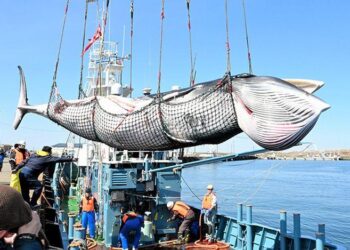Exploring the Climate Link: The Roman Empire and a Possible Mini Ice Age
Recent geological research has shed light on intriguing connections between ancient rock formations and important past events, particularly the fall of the Roman Empire. Analysis of sediment samples suggests that substantial climate changes around the 6th century may have been pivotal in causing societal upheaval and mass migrations during this transformative period. This engaging intersection of geology and history not only questions traditional narratives about Rome’s decline but also emphasizes how deeply climate can affect civilizations.As researchers continue to investigate these ancient geological records, their discoveries could substantially alter our understanding of past climatic events and their far-reaching impacts on human societies.
Indicators of Climate Change During the Roman Era
The latest studies examining ancient rock layers have uncovered crucial geological markers that indicate a notable climate shift coinciding with Rome’s decline. Scientists have identified mineral deposits within sedimentary rocks that correspond to a period marked by cooler global temperatures, ofen referred to as a “mini ice age.” These geological signs imply drastic alterations in weather patterns that likely disrupted agricultural production across Roman territories,leading to social unrest and economic instability.
The key findings from this research include:
- Temperature Fluctuations: Extensive analyses of ice cores alongside sediment samples reveal a significant temperature drop beginning around the 3rd century AD.
- Agricultural Decline: Historical records document widespread crop failures during this cooling phase, resulting in food shortages.
- Migrations Driven by Climate: Shifts in climate may have forced populations to migrate, further straining an already burdened Roman system.
| Date Period | Temperature Shift | Plausible Consequences |
|---|---|---|
| 3rd Century AD | Dropped by 2-3°C | Sparking famines |
| 4th Century AD | Deteriorating conditions | Migrations ensued |
| 5 th century AD | Stabilization occurred | Social disintegration |
Rising Discourse on Environmental Influences on Historical Societies
The conversation surrounding environmental factors affecting ancient civilizations has gained traction following recent geological findings.A new study suggests that climatic shifts—especially the onset of a mini ice age—may significantly contribute to Rome’s downfall. Evidence gathered from ancient rocks indicates considerable temperature declines during late antiquity, aligning with periods when imperial power was waning. This reinforces theories suggesting societies are susceptible to climatic variations, highlighting how environmental stressors can impact socio-political stability.
Critical elements supporting this theory include:
- Temperature Drops: Data indicates sharp declines in average temperatures impacting agricultural production.
- Food Scarcity: Resulting crop failures likely led to widespread famine and increased social discord.
- Population Movements: Environmental pressures probably instigated migrations which further strained resources.
- Political Fragility: Economic downturns stemming from environmental issues may have weakened governmental structures.
- Food Scarcity: Resulting crop failures likely led to widespread famine and increased social discord.
A summary table below outlines key climatic occurrences corresponding with major events in Roman history:
| Date/event > | Date/period > | Plausible Climatic Effects > |
|---|---|---|
| The onset of mini ice age > | Circa 450 AD > | A drop in temperature by 2-3°C > |
| The fall of Rome > | 476 AD ></ td | >Increased famine along with instability |
| >Barbarian invasions | >4 th -5 th centuries AD | >Displacement due to resource scarcity |












Shaqiri Shines: A Spectacular Goal for Switzerland!